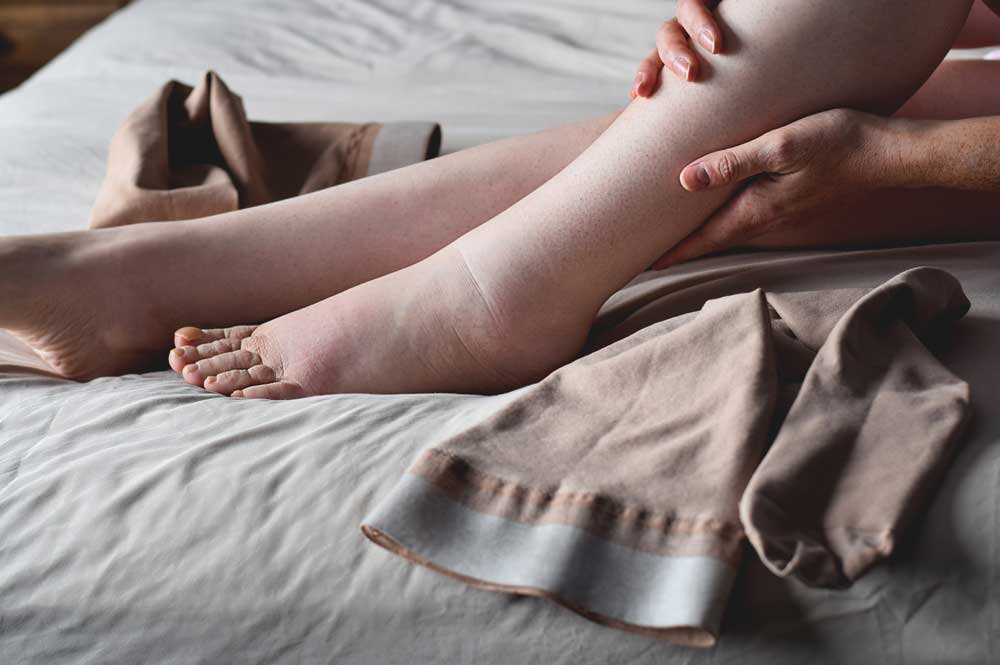Being pregnant is exciting for so many reasons. Significant changes take place in your body as it prepares for the arrival of that precious bundle of joy. As you navigate your pregnancy, it’s crucial to know what to expect and how to handle the journey. Along with first-trimester “morning sickness,” each stage of pregnancy has its issues; your body prepares for labor, hormone levels skyrocket and headaches and backaches become frequent visitors. Sometimes, the varicose veins during pregnancy may occur.
Most patients know the late pregnancy symptoms not to ignore, like preeclampsia and gestational diabetes. There are other less recognized conditions like varicose veins. Painful and unsightly, varicose veins are not typically serious. However, dangerous and potentially life threatening blood clots can occur.
In our last article, we discussed that varicose veins aren’t just a late pregnancy health problem. Varicose veins can start in early pregnancy. However, second and third trimester symptoms of varicose veins are more common.
Varicose Vein Risk Increases With Each Pregnancy
Pregnancy increases the risks of developing varicose veins. Many notice varicose and spider veins with their first pregnancy that resolve after delivery. During the second pregnancy, more develop and some remain after delivery. By the third baby, extensive varicose and spider veins are likely and persist after delivery. Let’s take a closer look at why pregnancy causes varicose veins and how the risk can be lowered.
Varicose Veins During Pregnancy
Multiple factors during pregnancy can lead to varicose veins. The blood volume and flow increases during pregnancy delivering nutrients to the placenta and taking by-products of metabolism away. The increased blood volume causes the veins to enlarge and may overwhelm the one way check valves in the legs, leading to the development of varicose veins..
Later in pregnancy the weight and size of the baby puts pressure on the abdominal veins, pelvic veins and inferior vena cava. The leg veins dilate as they struggle to overcome this pressure, damaging the check valves that control the healthy flow of blood back up the legs.
Hormonal changes during pregnancy help prepare the body for delivery. The pelvic ligaments ‘relax’ in preparation for vaginal delivery. These hormones relax the smooth muscle in the wall of the leg veins causing them to dilate making the check valves incompetent. Reflux of blood down the veins causes varicosities.
The changes of pregnancy gradually resolve over the three months after delivery. If the damage is minimal, the varicose veins resolve. Veins that do not disappear within three months should be evaluated by a phlebologist to determine if intervention is indicated.
Varicose Veins In Labia During Pregnancy
Surprisingly, varicose veins can occur in the labia during pregnancy, causing itching and pain in the sensitive pelvic area. For many the pain limits activities of daily living. Like varicose veins in the legs, labial veins often resolve after delivery. Specially design compression garments help with symptoms during pregnancy and prevent worsening veins..
The underlying cause of labial veins is reflux in the ovarian and pelvic veins. When sitting or standing if these veins are diseased venous blood drains into the labial and buttock veins. After delivery these veins can be the source of on-going vein disease. Symptoms of pelvic vein reflux include heaviness and aching in the pelvic area and thighs prior to menses and after sexual relations.
Although labial varicose veins can be seen on physical exam additional testing is needed to confirm pelvic veins reflux. Treatment of these refluxing pelvic veins can relieve the symptoms and lower the risks of varicose veins returning in the future.










